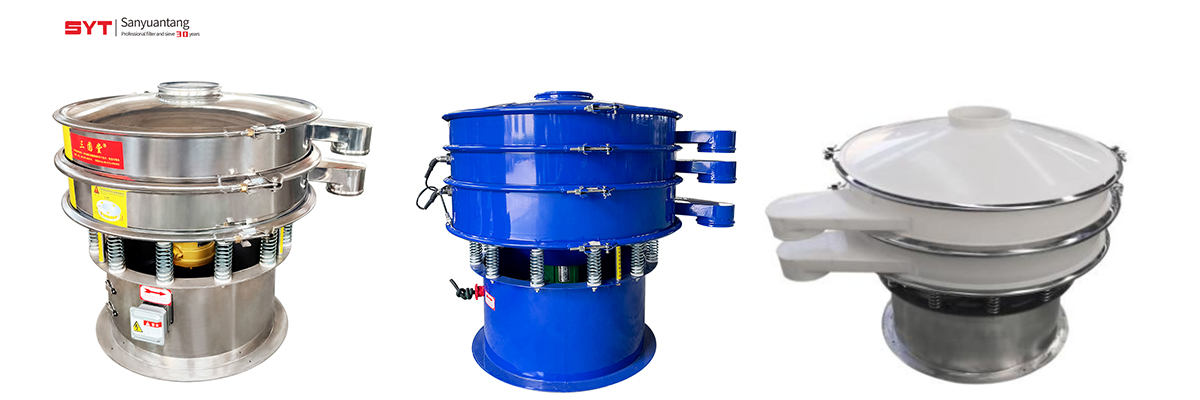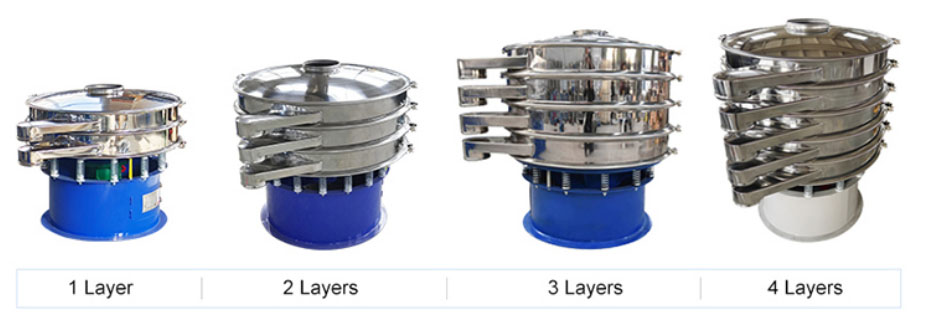Rotary vibrating screens are essential in various industries for precise screening and separation of materials. Understanding the cost structure of these machines is crucial for businesses looking to invest in them. The price of a rotary vibrating screen is determined by three primary factors: material, number of layers, and design specifications. This article provides an in-depth analysis of these factors to help potential buyers make informed decisions.
1. Material
The material used in constructing a rotary vibrating screen significantly influences its price. The most common materials are stainless steel, carbon steel, and plastic. Each material offers unique advantages and price points.

Stainless Steel: Known for its durability and resistance to corrosion, stainless steel is ideal for industries that process corrosive or high-hygiene materials, such as food and pharmaceuticals. The price range for a stainless steel rotary vibrating screen is between 600$ to 3000$. The broad range is due to variations in the quality and thickness of the stainless steel used.
Carbon Steel: This material is less expensive than stainless steel and is suitable for applications where corrosion resistance is not a primary concern. Carbon steel rotary vibrating screens range from 500$ to 5000$. These screens are commonly used in construction, mining, and other heavy industries.
Plastic: While not as common as metal screens, plastic rotary vibrating screens are available for specialized applications. These are typically cheaper but less durable and are used in environments where metal screens might react with the screened materials.
2. Number of Layers
The number of layers in a rotary vibrating screen directly impacts its functionality and price. Each layer allows for separating materials into different sizes, which is essential for precise screening operations. Most rotary vibrating screens feature between 1 to 5 layers.
Single Layer: Suitable for basic separation tasks where only one separation is needed.
Multiple Layers: Recommended for more complex screening needs, with three layers being a common choice. Each additional layer increases the machine’s cost due to the extra materials and manufacturing complexity involved.

The approximate cost per layer is:
Stainless Steel: 50-100$ per layer
Carbon Steel: 50-150$ per layer
Selecting the appropriate number of layers depends on the material volume and the required precision of the separation process. Overloading the screen with too many layers can reduce efficiency and increase maintenance costs.
3. Design
Custom designs can significantly affect the price of a rotary vibrating screen. Standard models are typically less expensive, but many users require modifications to suit specific operational needs. Customization can include alterations in material, size, style, and additional features like dust covers or vibration-dampening systems.
Standard Design: These models are generally more affordable and meet the needs of most industries.
Customized Design: If your operation requires a specialized rotary vibrating screen, the cost will vary based on the complexity and materials involved. Custom designs typically involve higher materials and labor costs. For an accurate quote, it’s best to consult directly with the manufacturer.
Additional Considerations
Beyond the primary factors of material, number of layers, and design, several other aspects can influence the total cost of ownership for a rotary vibrating screen.
Maintenance and Durability
The initial purchase price is just one aspect of the total cost. Maintenance, repairs, and downtime can add up over the lifespan of the machine. Stainless steel screens, while more expensive initially, tend to have longer lifespans and lower maintenance costs compared to carbon steel or plastic screens.
Manufacturer and Brand
The reputation and reliability of the manufacturer can also impact the price. Established brands with proven track records may charge a premium but often offer better support, warranties, and reliability.
Size and Capacity
Larger screens with higher capacity will cost more. When selecting a rotary vibrating screen, consider the scale of your operations to ensure you are not overpaying for capacity you don’t need or under-sizing the equipment, which can lead to inefficiencies.
Conclusion
The cost of a rotary vibrating screen varies by material, number of plies, and design. Stainless steel screens are the most durable and expensive, carbon steel screens strike a balance between cost and performance, and plastic screens are suitable for niche applications. Additional plies and custom designs can increase the price, so before purchasing a rotary vibrating screen, carefully evaluate your specific needs to ensure you find the best rotary vibrating screen for your business.